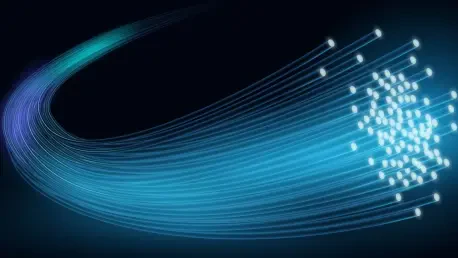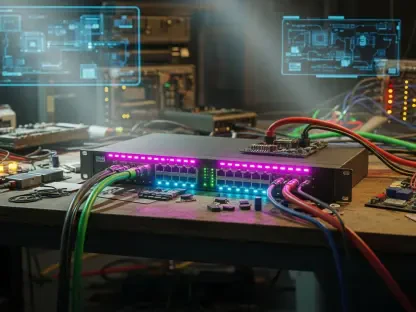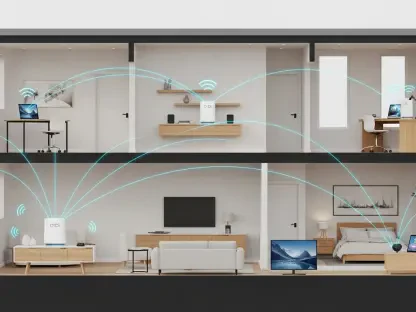Fiber optic strain sensors are reshaping the landscape of numerous industries, heralding an era characterized by advanced monitoring and safety enhancements. These highly sophisticated sensors operate by detecting minute deformations within structures using light transmission through optical fibers. Their introduction into sectors such as construction, aerospace, and healthcare brings several advantages over traditional methods, boosting the reliability and efficiency of critical infrastructure. With an expected market valuation soaring to USD 417.67 billion by 2032, the fiber optic strain sensor market is experiencing unprecedented growth. This rapid expansion is propelled by increasing demands for smart infrastructure and the evolution of technological applications across diverse fields.
Fiber Optic Strain Sensors and Their Applications
Advanced Monitoring in Construction
As urban areas expand and involve complex engineering feats, the necessity for detailed structural monitoring becomes apparent. Fiber optic strain sensors are progressively woven into the fabric of modern construction as key instruments in ensuring the longevity and safety of edifices. These sensors are indispensable in monitoring the integrity of structures like bridges, tunnels, and skyscrapers, providing real-time insights into any strain experienced by these intricate frameworks. Unlike conventional methods, they offer superior sensitivity and durability, maintaining accuracy across long distances without suffering from electromagnetic interference. As global cities strive for smart infrastructure development, the inclusion of fiber optic strain sensors in construction projects stands as a testament to their transformative potential.
Aerospace and Defense Innovations
In the aerospace sector, the formidable capabilities of fiber optic strain sensors enhance aviation safety and performance. Monitoring strain in composite materials used in aircraft structures directly improves safety protocols, while their lightweight and compact design align seamlessly with aerospace requirements. Additionally, these sensors play a crucial role in analyzing the structural dynamics of fuselages and wings, ensuring that aircraft can withstand the demands of modern flight. In defense, the usage expands to submarines and naval ships, where these sensors aid in the constant monitoring of vibrations and loads. This integration not only helps in the maintenance of such critical machinery but also streamlines the development of future defensive systems, underscoring the indispensable nature of fiber optics in these fields.
Market Dynamics and Influences
Government Initiatives and Regulatory Support
Governments across the globe are increasingly supportive of initiatives encouraging the integration of smart technologies in infrastructure, significantly impacting the adoption of fiber optic strain sensors. Regions like North America, Europe, and Asia-Pacific are at the forefront of this movement, championing policies that prioritize public safety and structural integrity of critical infrastructure. These efforts are aligned with broader objectives of fostering smart city developments, where real-time surveillance of infrastructure is crucial. Regulatory frameworks are facilitating this rapid integration, thereby nurturing an environment ripe for technological innovation. Projects across sectors such as transportation and environmental management are adopting these sensors, positioning them as a cornerstone in the pursuit of smarter, safer communities.
The Role of Research and Development
R&D efforts within the fiber optic sensor industry are fueling a wave of innovation, manifesting in miniaturization and enhanced integration capabilities with IoT and AI technologies. Companies are investing heavily in developing sensors that are more compact, efficient, and versatile. This push for innovation not only addresses current demands but also opens the door to new applications in unexplored sectors. The ability to incorporate these sensors seamlessly into existing and new systems underscores their growing importance. By focusing on developing more efficient and integrated technologies, companies are enhancing the overall appeal and application scope of fiber optic strain sensors, ultimately solidifying their place in the technological landscape.
Opportunities and Challenges
Expanding into New Sectors
The versatility of fiber optic strain sensors presents a significant opportunity for expansion into diverse industries beyond the traditional sectors. For instance, the automotive industry is beginning to explore the potential of these sensors for enhancing vehicle safety and performance. Similarly, the energy sector recognizes their value for monitoring pipelines and power infrastructure. The adaptability of fiber optic strain sensors to various environments and conditions ensures they are poised to capture market share across multiple verticals. However, each sector presents unique challenges that must be navigated to fully realize these opportunities, including industry-specific regulatory hurdles and the need for tailored sensor designs.
Overcoming Technological Barriers
Despite the promising expansion of fiber optic strain sensors, several technological barriers exist that must be addressed to maximize their utility. Issues such as the high initial cost of installation and the complex nature of integrating these systems into existing infrastructure can pose significant challenges. Furthermore, ensuring these sensors’ long-term reliability in harsh environmental conditions requires ongoing advancements in materials and sensor design. Overcoming these barriers involves rigorous testing and development, alongside collaboration between industry leaders and academic researchers. By addressing these concerns, the industry can work towards broader adoption of these sensors, ensuring sustainable growth and innovation in the related fields.
Future Perspectives and Strategic Growth
The Impact of Miniaturization and Connectivity
The ongoing trend of miniaturization in technology extends to fiber optic strain sensors, enhancing their applicability across a wider range of products and systems. Miniaturized sensors are particularly advantageous in medical diagnostics and wearable technology, where space and weight are critical factors. Additionally, the integration of these sensors with IoT platforms offers new opportunities for data-driven decision-making, as they can provide real-time, remote monitoring capabilities. This connectivity enables users to gather and analyze vast amounts of data, driving further innovation and efficiency in various industries. Therefore, continued focus on miniaturization and connectivity will likely serve as a catalyst for fiber optic strain sensors’ growth and evolution.
Strategic Market Positioning
The fiber optic sensor industry is witnessing significant innovation driven by extensive R&D efforts, particularly in miniaturization and integration with IoT and AI technologies. Companies are allocating substantial resources to develop sensors that are not only smaller but also more efficient and adaptable. This drive for cutting-edge innovation addresses the demands of today’s market while simultaneously uncovering potential applications in previously untapped sectors. The capacity to seamlessly integrate these advanced sensors into both existing and emerging systems emphasizes their increasing significance. By honing in on the development of efficient and integrated technologies, companies are broadening the functionality and appeal of fiber optic strain sensors. This ultimately secures their vital role in the ever-evolving technological landscape. These advancements are essential as they enhance both the performance and scope of application for fiber optic sensors, ensuring these devices remain at the forefront of innovation in various industries.









